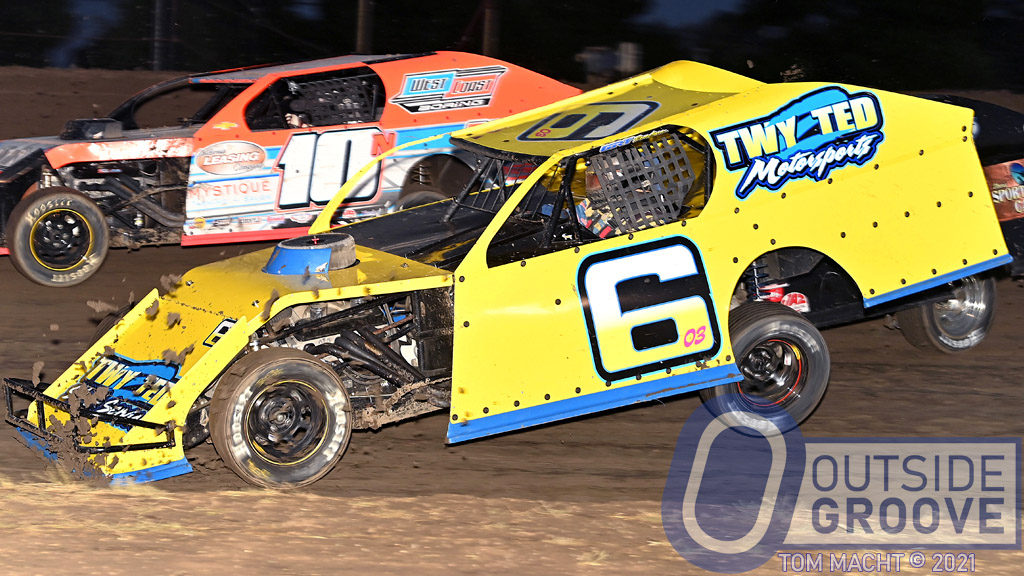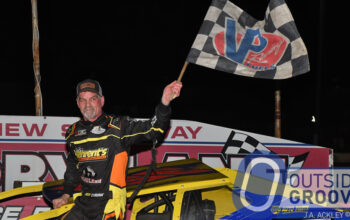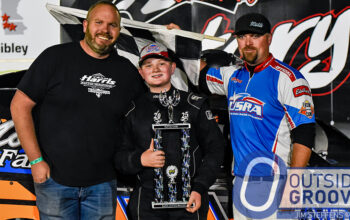While his transition from pavement to dirt hasn’t always been smooth sailing, Jim Pettit II (6) has found success. This past weekend, however, he looked like he rode a bucking bronco. But, he had help, as his car received a hit to its right side from another car, sending it airborne. He finished 13th on this night at Merced Speedway in California.
“When I started competing in the IMCA modified division, I told the racers I was running against that I was two years behind them,” Pettit, 54, of Prunedale, California, said lightheartedly. “Three years ago, I was a year behind. Last year, I won a few, so I told everyone to just wait … I’m still six months behind. I’ve got three wins this year, so now I tell them I’m coming for you.”
On pavement, Pettit reigned supreme in the super late model world. He won two NASCAR Southwest Tour championships (2004–05) and three in what many consider its successor series, the Spears SRL Southwest Tour Series (2011, ’13, ’15). His record on pavement helped him earn induction this year into the West Coast Stock Car Hall of Fame.
For the past four seasons, Pettit focused primarily on dirt modified racing. He has found the setups particularly challenging on dirt.
“Baseline chassis settings from the manufacturers are not even close to the setup you need to be competitive,” said Pettit. “There are no more conventional setups. Spring rates are way different than they were just a few years ago.”
Of course, one key difference from pavement to dirt is that dirt cars lack a sway bar, which made it interesting for Pettit.
“On pavement, you used to see four or five guys push on the car while the sway bar is adjusted to ride height,” Pettit said. “[On dirt,] we are using the right-front shock to keep spring load in that corner by short-shafting the shock — [that] performs that function [of a sway bar] on the front.”
Jim Pettit II said that he sees pavement technology now influencing dirt. The two types of oval-track surfaces have more in common than one might think.
“You still want air on the nose, to keep it down to aid in steering,” said Pettit. “There is a big learning curve in coming from pavement to dirt modified racing. We are getting closer and closer to where we need to be.”
Mike Adaskaveg has written hundreds of stories since the website’s inception. This year marks his 54th year of covering auto racing. Adaskaveg got his start working for track photographer Lloyd Burnham at Connecticut’s Stafford Motor Speedway in 1970. Since then, he’s been a columnist, writer, and photographer, in racing and in mainstream media, for several outlets, including the Journal Inquirer, Boston Herald, Stock Car Racing, and Speedway Illustrated. Among Adaskaveg’s many awards are the 1992 Eastern Motorsport Press Association (EMPA) Ace Lane Photographer of the Year and the 2019 National Motorsports Press Association (NMPA) George Cunningham Writer of the Year.





